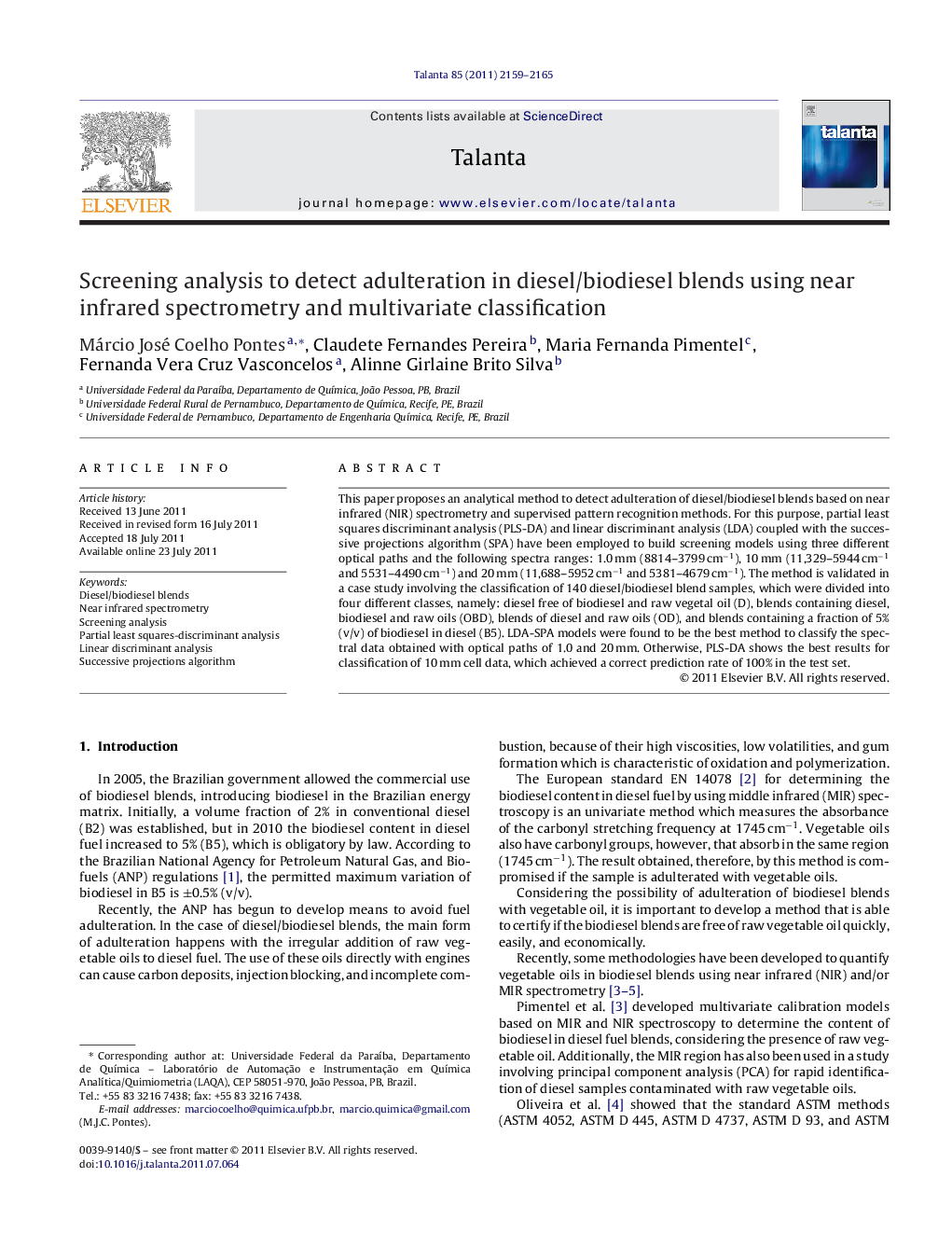| Article ID | Journal | Published Year | Pages | File Type |
|---|---|---|---|---|
| 10559512 | Talanta | 2011 | 7 Pages |
Abstract
This paper proposes an analytical method to detect adulteration of diesel/biodiesel blends based on near infrared (NIR) spectrometry and supervised pattern recognition methods. For this purpose, partial least squares discriminant analysis (PLS-DA) and linear discriminant analysis (LDA) coupled with the successive projections algorithm (SPA) have been employed to build screening models using three different optical paths and the following spectra ranges: 1.0Â mm (8814-3799Â cmâ1), 10Â mm (11,329-5944Â cmâ1 and 5531-4490Â cmâ1) and 20Â mm (11,688-5952Â cmâ1 and 5381-4679Â cmâ1). The method is validated in a case study involving the classification of 140 diesel/biodiesel blend samples, which were divided into four different classes, namely: diesel free of biodiesel and raw vegetal oil (D), blends containing diesel, biodiesel and raw oils (OBD), blends of diesel and raw oils (OD), and blends containing a fraction of 5% (v/v) of biodiesel in diesel (B5). LDA-SPA models were found to be the best method to classify the spectral data obtained with optical paths of 1.0 and 20Â mm. Otherwise, PLS-DA shows the best results for classification of 10Â mm cell data, which achieved a correct prediction rate of 100% in the test set.
Keywords
Related Topics
Physical Sciences and Engineering
Chemistry
Analytical Chemistry
Authors
Márcio José Coelho Pontes, Claudete Fernandes Pereira, Maria Fernanda Pimentel, Fernanda Vera Cruz Vasconcelos, Alinne Girlaine Brito Silva,
